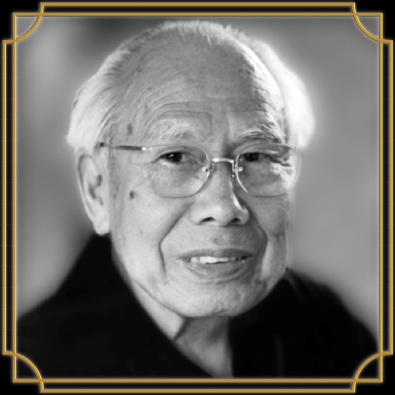Primary tabs

Akira Yoshizawa
Kaminokawa, Tochigi
Japan
Summary
Akira Yoshizawa (吉澤 章 Yoshizawa Akira; 14 March 1911 – 14 March 2005) was a Japanese origamist, considered to be the grandmaster of origami. He is credited with raising origami from a craft to a living art. According to his own estimation made in 1989, he created more than 50,000 models, of which only a few hundred designs were presented as diagrams in his 18 books. Yoshizawa acted as an international cultural ambassador for Japan throughout his career. In 1983, Emperor Hirohito awarded him the Order of the Rising Sun, 5th class, one of the highest honors bestowed in Japan.[1]
Life/Biography
Yoshizawa was born on 14 March 1911, in Kaminokawa, Japan, to the family of a dairy farmer. When he was a child, he took pleasure in teaching himself origami. He moved into a factory job in Tokyo when he was 13 years old. His passion for origami was rekindled in his early 20s, when he was promoted from factory worker to technical draftsman. His new job was to teach junior employees geometry. Yoshizawa used the traditional art of origami to understand and communicate geometrical problems.[1]
In 1937 he left factory work to pursue origami full-time. During the next 20 years, he lived in total poverty, earning his living by door-to-door selling of tsukudani (a Japanese preserved condiment that is usually made of seaweed). During World War II, Akira Yoshizawa served in the army medical corps in Hong Kong. He made origami models to cheer up the sick patients, but eventually fell ill himself and was sent back to Japan.[2] His origami work was creative enough to be included in the 1944 book Origami Shuko, by Isao Honda (本多 功).
However, it was his work for the January 1952 issue of the magazine Asahi Graph that launched his career, which included the 12 zodiac signs commissioned by a magazine.[1]
In 1954 his first monograph, Atarashii Origami Geijutsu (New Origami Art) was published. In this work he established the Yoshizawa–Randlett system of notation for origami folds (a system of symbols, arrows and diagrams[3]), which has become the standard for most paperfolders. The publishing of this book helped Yoshizawa out of his poverty. It was followed closely by his founding of the International Origami Centre in Tokyo in 1954, when he was 43.[1]
Work and Major Achievements
Major Contribution
Presenting his contribution to the development of modern recreational paper folding.
Exhibitions
Awards
Books and Publications
- Atarashii Origami Geijutsu, Origami Geijutsu-Sha 1954[6]
- Origami Reader I, Ryokuchi-Sha 1957[6]
- Dokuhon, Vol.1 (Origami Tokuhon), 1973, ISBN 4-8216-0408-6
- Sosaku Origami (Creative Origami), Nippon Hoso Kyokai 1984, ISBN 4-14-031028-6
- Dokuhon, Vol.2 (Origami Tokuhon), 1986[6]
- Origami Dokuhon II (Origami Reader II), Kamakura Shobo 1986, ISBN 4-308-00400-4
- Origami: Living Nature, 1996, ISBN 9784916096319
Dave Brill tells about Akira Yoshizawa
Part of the CFC documentary series about the great masters of the past, in which we interview a CFC member about those masters. Here, Dave Brill talks about one of the greatest masters, Akira Yoshizawa.
The video was recorded on June 3rd, 2024.